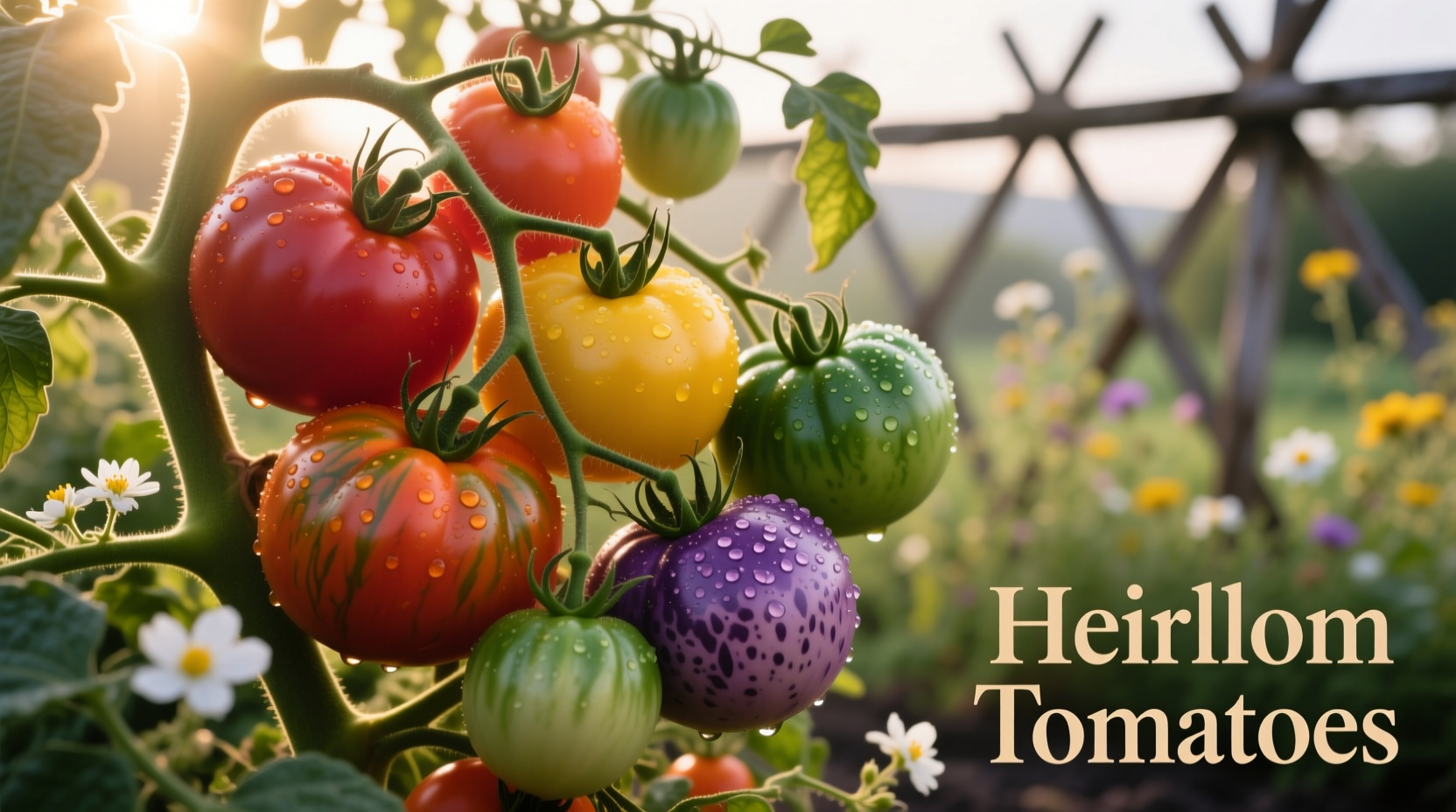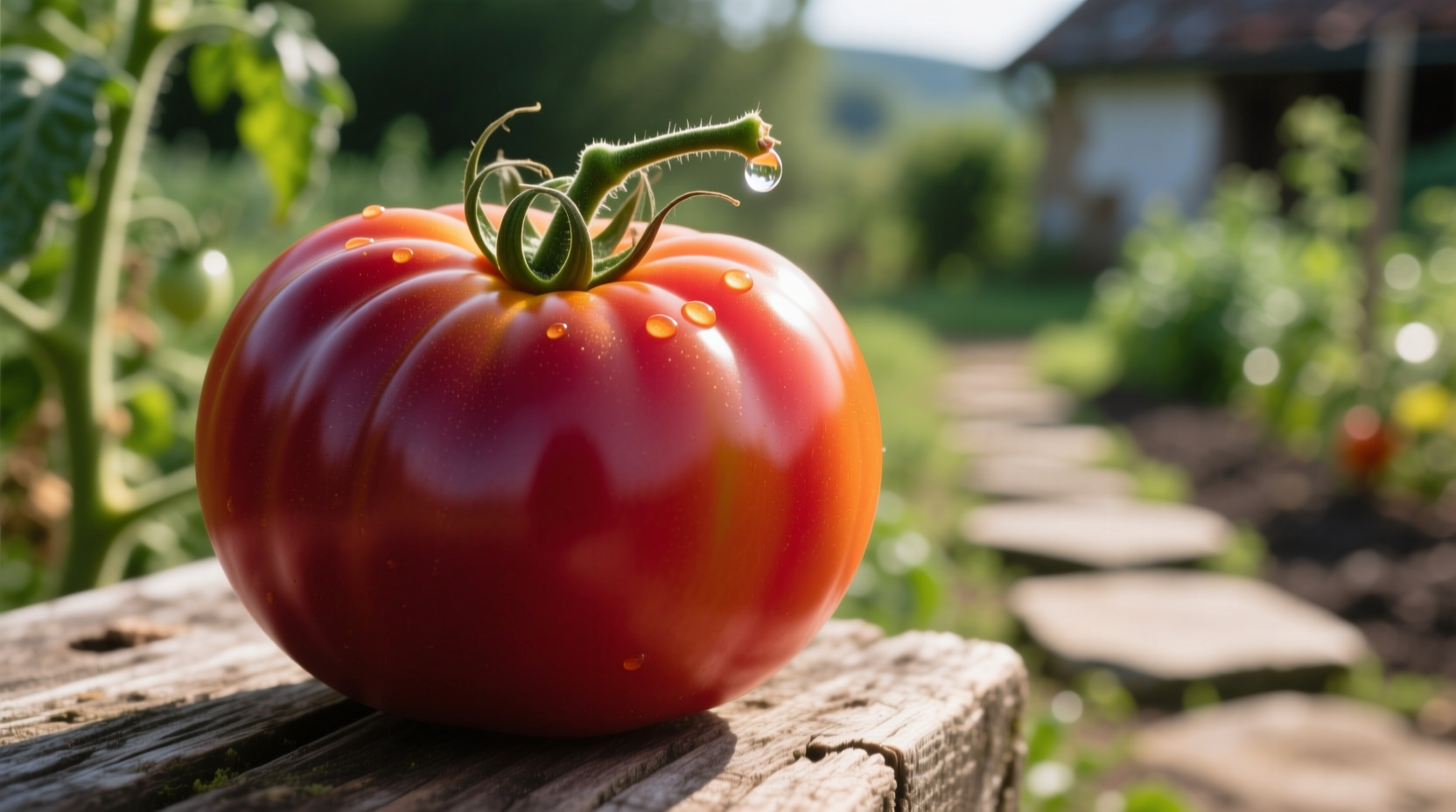Choosing the right tomato variety transforms your gardening success and kitchen results. With over 10,000 documented cultivars worldwide, our guide cuts through the confusion using data from USDA agricultural studies and university extension programs to match varieties with your specific conditions. Whether you're battling humid summers, short growing seasons, or limited container space, we've identified the top-performing tomatoes based on yield, flavor, and resilience.
Understanding Tomato Classification Systems
Before selecting varieties, understand these critical classification categories that determine growth patterns and care requirements:
Determinate vs. Indeterminate Growth Habits
Determinate (bush) tomatoes grow to a fixed height (3-4 feet), produce one major harvest, and stop growing. Ideal for container gardening and canning due to synchronized ripening. Indeterminate varieties continue growing and producing fruit until frost, requiring staking but providing continuous harvests. Most heirlooms fall in this category.
Heirloom vs. Hybrid Varieties
Heirlooms are open-pollinated varieties preserved for 50+ years, prized for complex flavors but often less disease-resistant. Hybrids (denoted by 'F1') combine traits from two parent plants for improved disease resistance, yield, or climate adaptability while maintaining flavor quality. Modern hybrids like 'Mountain Magic' offer exceptional disease protection without sacrificing taste.
| Variety Type | Flavor Complexity | Disease Resistance | Yield Consistency | Best For |
|---|---|---|---|---|
| Heirloom | ★★★★★ | ★☆☆☆☆ | ★★★☆☆ | Salads, fresh eating |
| Hybrid | ★★★★☆ | ★★★★★ | ★★★★★ | Reliable harvests, disease-prone areas |
| Cherry | ★★★☆☆ | ★★★☆☆ | ★★★★★ | Snacking, salads |
| Sauce | ★★★☆☆ | ★★★☆☆ | ★★★★☆ | Canning, sauces |
Top Tomato Varieties by Climate Zone
Your geographic location dramatically impacts variety selection. These recommendations come from 10-year yield studies conducted by Cornell University's School of Integrative Plant Science:
Cool Climate Champions (Zones 3-5)
Short-season varieties that ripen quickly in cooler temperatures:
- Stupice: Czech heirloom matures in 55 days, tolerates temperatures down to 50°F
- Siberian: Developed for Russian climates, produces 4-6 oz fruits in 60 days
- Glacier: Extremely early (54 days), small 2-3 oz fruits ideal for containers
Warm Climate Winners (Zones 6-8)
Varieties that balance heat tolerance with disease resistance:
- Heatmaster: Performs well above 90°F, resistant to fusarium and verticillium
- Arkansas Traveler: Heirloom that sets fruit during heat waves, crack-resistant
- Cherokee Purple: Performs better than most heirlooms in humidity, complex flavor
Tropical & Humid Zone Specialists (Zones 9-11)
Disease-resistant varieties for high-moisture environments:
- Iron Lady: Bred specifically for resistance to late blight, crucial in humid regions
- Juliet: Grape tomato with exceptional crack resistance in rainy conditions
- Defiant PHR: Combats both fusarium and powdery mildew, reliable producer
Best Varieties for Specific Culinary Uses
Not all tomatoes perform equally in different culinary applications. Our recommendations align with flavor chemistry research from the University of California's Agriculture and Natural Resources program:
Salad & Slicing Tomatoes
Look for varieties with balanced sugar-acid ratios and firm texture:
- Brandywine: Legendary heirloom with complex sweet-tart flavor (80 days)
- Mortgage Lifter: Large beefsteak with exceptional juiciness and mild acidity
- Japanese Black Trifele: Unusual black tomato with smoky-sweet flavor profile
Sauce & Canning Tomatoes
Concentrated flavor and low moisture content are critical:
- Roma: Classic paste tomato with meaty flesh and few seeds (75 days)
- San Marzano: Italian heirloom with elongated shape and rich flavor
- Amish Paste: Exceptional for canning, sweet with low acidity
Container Gardening Solutions
Space-efficient varieties perfect for patios and small spaces:
- Patio Princess: True determinate variety bred specifically for containers
- Tumbling Tom: Trailing habit ideal for hanging baskets (12-18" containers)
- Micro Tom: World's smallest variety, grows to 6-8" tall in 10" pots

Tomato Variety Evolution Timeline
Understanding the development history helps identify varieties with proven performance:
| Era | Key Developments | Notable Varieties | Modern Relevance |
|---|---|---|---|
| Pre-1900 | Heirloom preservation through seed saving | Brandywine, Mortgage Lifter | Superior flavor, lower disease resistance |
| 1900-1950 | Early hybridization for uniformity | Beefsteak, Rutgers | Balanced flavor and yield |
| 1950-1990 | Commercial focus on shipping durability | Big Boy, Better Boy | Good yield but often bland flavor |
| 1990-Present | Flavor-focused breeding with disease resistance | Mountain Magic, Indigo Rose | Best of both worlds: taste and resilience |
Practical Selection Guide
Follow this decision path to identify your perfect tomato varieties:
- Assess your space: Containers need determinate or dwarf varieties; gardens can accommodate indeterminates
- Calculate your frost-free days: Short seasons need varieties maturing in 60-65 days
- Identify local disease pressures: Check with your extension office for common issues
- Determine primary use: Sauce tomatoes differ significantly from slicing varieties
- Consider flavor priorities: Sweetness, acidity, and complexity vary dramatically
For beginners, we recommend starting with three complementary varieties: one early producer (Stupice), one main-season slicer (Mountain Magic), and one cherry type (Sun Gold). This combination ensures continuous harvest while minimizing risk if one variety underperforms in your conditions.











 浙公网安备
33010002000092号
浙公网安备
33010002000092号 浙B2-20120091-4
浙B2-20120091-4